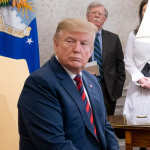Modern Monetary Theory (MMT) is a heterodox Post-Keynesian economic theory scaring the political establishment, thanks to its resurgent support sparked by worsening inequality. Its cofounders Warren Mosler, Stephanie Kelton, Randall Wray, among others, have become pop culture sensations. But mainstream academics and leaders from both left and right have lambasted the contentious theory. Many on the right believe MMT is a radical recipe for totalitarian socialism, while many on the left believe MMT is a technocratic fix that precludes a Marxian class revolt. But MMT is just a scientific theory like evolution or relativity: it objectively describes how the modern economic system works. Inadvertently, MMT has gained support among both grassroots progressive activists and Wall Street money managers.
Critics of MMT often paint it as complex and arcane, but the theory actually posits some simple ideas: 1. A monetarily sovereign country can always satisfy financial obligations and never be forced to default. 2. A sovereign country spends first and then taxes, which over time results in the national debt - or national savings. 3. A sovereign country's spending is restrained not by tax receipts but real resources and inflation. 4. The central bank is a monopolist price setter that mandates the country's interest rates. 5. Recessions and depressions are caused by public surplus or private debt. 6. Fiscal adjustment is better than monetary policy for economic recovery. 7. Developed economies are better off with lightly regulated free trade and large trade deficits, as imports are real benefits while exports are real costs.
Although the main tenets of MMT seem stunning at first glance, the theory has gained a large following among political activists and financial managers. Wall Street likes MMT's strong support from accounting identities and historical evidence. But MMT's most important pillar is its power to forecast and explain, often against mainstream expectations. MMT scholars predicted and explained the shaky growth and economic woes of the eurozone. They accurately predicted that US quantitative easing and zero interest rate policy would be deflationary and lead to a stronger dollar (USD). They correctly forecast that the Obama stimulus and Trump tax cuts would not cause high inflation. So it is easy to understand why people who dislike the current mainstream economic consensus might like MMT. And on Wall Street, Mosler, Goldman's
MMT is not the "magic money tree" that critics charge. But it is a novel idea that can answer the policy question of "how to pay for." Progressive ideas inspired by MMT, often championed by its scholars, include universal healthcare, jobs guarantee, free public college, and a Green New Deal. Though MMT is correct in objective description, MMT-inspired policies deserve good faith debate. Wall Street might not agree with all MMT-inspired proposals, but the financial industry can use MMT as a foundation for contrarian trading thesis, as well as lobbying for friendly legislation. But MMT is important and necessary, for it transforms the public policy conversation.
The author does not hold any positions in any of the securities above.
- 1. https://modernmoneybasics.com/
- 2. https://www.bloomberg.com/news/articles/2019-04-08/goldman-sees-mmt-positives-as-economists-debate-who-buys-lunch
- 3. https://www.nytimes.com/2019/04/05/business/economy/mmt-wall-street.html
- 4. https://www.nakedcapitalism.com/2019/02/bill-black-modern-monetary-theory-march.html
- 5. https://www.businessinsider.com/alexandria-ocasio-cortez-wall-street-should-love-mmt-2019-1


















